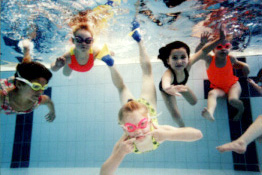Why does the SwimJim Team sing so much? Not only is singing a great learning tool but research also shows that singing is also an effective immunity booster. Since cold and flu season is at its peak, read the article below from upwave.com for fun and simple immune boosters.
Here’s looking achoo, immune system!
By Elizabeth Kuster, upwave.com
1. Singing
Research shows that singing is an effective immunity booster — even if you’re off-key. So sing in the shower in the morning. Sing in the car during your commute. Sing at home when you’re doing the dinner dishes. But don’t sing at work. That would be weird. (Just sayin’.)
2. Laughing
According to a variety of studies, laughter activates protective T-cells and increases antibody production. So listen to a hilarious podcast or shock-jock while you get ready for work. Watch an episode of your favorite sitcom while you eat breakfast. Watch a stand-up DVD during dinner. Crack open a funny book before you hit the hay. The more you LOL on a daily basis, the more you help your immune system stay strong. (And the nice thing about laughter is, it’s often contagious. So you can spread the healthy benefits to others!)
3. Stress-busters
Stress is Public Enemy No. 1 when it comes to your immune system (the cortisol it produces suppresses your immune cells), so anything that lowers your stress levels will help your immune system do its job. Identify the people and activities that calm you down and take you to your happy place, then start fitting ’em into your schedule on a regular basis.
4. Probiotics
The health of the GI tract plays a big role in bolstering the immune system. In fact, Amanda Bontempo, a registered dietitian at NYC’s Montefiore-Einstein Center for Cancer Care, told upwave that “the health of the GI system determines the health of the immune system.”
A major key to digestive health? Probiotics such as yogurt, kefir, sauerkraut, miso and sourdough bread, all of which contain so-called “good bacteria” that helps your GI tract do its thang.
5. Prebiotics
These soluble fibers — which are found in foods such as bananas, artichokes, onions and leeks — help probiotics work their magic, and therefore help the GI tract, too.
6. Human touch
Getting a massage, hugging, holding hands, having sex — all lower the body’s immunity-weakening cortisol levels. According to research, getting a 45-minute massage also bolsters pathogen-fighting white blood cells and reduces inflammatory cytokines, which have been connected to autoimmune diseases.
Having sex, hugging and holding hands cause our bodies to release cortisol-lowering oxytocin, making them awesome immune-system improvers. Some experts, in fact, recommend eight hugs a day to take your oxytocin benefits to the max. So get your hug on!
7. Meditation
Mindfulness meditation positively influences the immune system; according to one study, participants who meditated for eight weeks showed an increased immune response to the flu shot. If you’re a morning person, start your day with a three-minute meditation session.
8. Solid shut-eye
Studies have found that sleep deprivation lowers your T-cell count, thereby reducing your body’s ability to fight off disease-causing pathogens. If you don’t get eight hours of sleep on a regular basis, start taking steps to improve your sleep hygiene now. For tips (which include making 2 p.m. your last call for caffeine), check out our Start A Healthy Sleep Routine Challenge.
9. Moderate exercise
Exercise doesn’t just help your body fight infection: Research shows that it also decreases your risk of getting diseases such as osteoporosis and cancer. Even taking a 20-minute walk every day will strengthen your body’s disease-fighting capabilities — 10 minutes out, and 10 minutes back. That’s it!
10. Human connection
According to research published by the American Psychological Association, social isolation weakens immunity and compromises the body’s ability to fight infection. Social ties such as marriage, on the other hand, strengthen it. Feeling lonely? Seek the company of others — it will strengthen your immune functioning.
11. Greens
Green veggies like bok choy, kale and broccoli give your immune system a leg up by ensuring that immune cells in your gut are functioning properly. Crispy Soy Roasted Kale Chips, anyone?
To see the original article and the sources that were sited please click this link, upwave.com
This article was originally published on upwave.com.
© 2013 upwave, All Rights Reserved.







